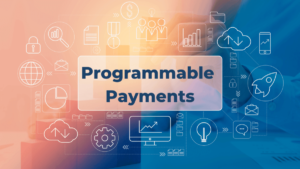In the post-pandemic UK economy, why is it that financial exclusion rates are on the rise? Here at the Digital Pound Foundation, we want to start a conversation exploring how we can actively participate in building a more inclusive financial system, how the introduction of a digital Pound can help achieve this, and how we can support the development of a digital Pound that is “inclusive by design”.
Despite having one of the fastest-growing post-pandemic economies in Europe, why are there still over a million unbanked people in the UK? Why do the most financially vulnerable households and small businesses, who are the backbone of our economy, pay a premium to access their essential goods and services when they have the least amount of money to do so?
With all of this in mind, the Digital Pound Foundation is launching a Financial Inclusion Working Group, and a series of thought leadership papers, exploring the issues underlying financial (and digital) exclusion, and how these could potentially be addressed. We will also seek to identify the considerations that need to be taken into account by policymakers and industry to bring about truly sustainable and inclusive change in the financial system.
In this paper, the first in a series, we will provide an introduction to the financial exclusion issue here in the UK and those affected by it, and why we believe that a digital Pound could be a solution to this problem.

What does financial exclusion mean?
Financial exclusion is a term used to describe a person’s (or business’s) inability to access mainstream financial services, including bank accounts and credit. Sadly, it is not nearly as rare as you may imagine it to be in the UK. A Financial Inclusion Annual Monitoring Report from the University of Birmingham identified that 1.71 million adults were unbanked in 2013/14. Given that access to a bank account is so fundamental to life in the UK, the consequences to individuals and families of not having one can be far-reaching and significant. The unbanked may face challenges in accessing other services, or may only access those services subject to a premium (such as prepaid gas and electricity meters), and at the most extreme, may be limited in the jobs they can take or in their ability to access their own income. Without access to the mainstream banking services that many of us take for granted, they may be forced into accepting high-cost credit or loan facilities to help cover everyday costs.
It’s important to note that a wide range of people at various stages in their life can be affected by financial exclusion. Age, education, income, personal relationships, visa status, employment status, income, geography, and crime are just some of the factors that can influence the level of financial exclusion experienced by an individual. Any potential solutions to the problem, therefore, need to be versatile and adaptable, in order to overcome the obstacles faced by such a broad range of circumstantial challenges.
Financial inclusion, conversely, refers to the actions that those who are financially “included” have the ability to take, and the experiences in which they can fully participate, such as:
- managing day-to-day financial transactions
- meeting expenses (both predictable and unpredictable)
- managing an unexpected loss of earned income or expense, or a change in personal circumstances
- avoiding or reducing problematic debt.
For decades, policymakers and the financial industry have struggled to address and tackle the relationship between “financial exclusion” and “financial inclusion” effectively, despite the latter being a necessary component of an effective and inclusive, sustainable growing economy. On a global level, financial exclusion continues to be a major policy issue for the World Bank, the UN, and developing economies. The absence of financial inclusion enables a darker side to the economy to flourish, which in turn, enables exploitation, crime, tax evasion, and abuse of the most vulnerable.
It would be remiss to not mention the impact of “digital exclusion” on financial inclusion rates. In an increasingly digital world, simply lacking access to up-to-date technology, or the networks and connectivity required to fully utilise such technology can immediately exclude a person or community from the online financial services that can enable greater financial inclusion.

How does cash decline impact financial exclusion?
During the height of the Covid-19 pandemic, contactless payments and other forms of digital transactions became the primary choice for both consumers and businesses. Many retail outlets, responding to reports that Covid-19 could be transmitted through handling physical cash, quickly put up “no cash” signs. Post-pandemic, these appear to be sticking around, and- cutting off millions of shoppers worldwide from access to essential goods and services. The pandemic saw the use of ATMs drop significantly, with only a partial recovery since Covid restrictions have been lifted. It’s not only consumers who have been impacted by this decline in cash; charity donations, the homeless and the digitally excluded (including vulnerable and elderly individuals) have all suffered as a result.
Many financial institutions in countries including the UK, the Netherlands, Belgium, France, Germany, and Luxembourg have fast-tracked their digital strategies and openly accepted a rise in the amount consumers can spend just by tapping a debit or credit card. In the UK this now allows contactless spending up to £100, and with the growth in Apple and Google wallets, customers are now able to set open limits. All of these moves continue to move commerce and trade further away from the use of physical cash, whilst simultaneously increasing the difficulties experienced by the financially excluded.
Almost half the UK population (48 percent, 25 million people) say that a complete loss of access to cash would be extremely problematic for them. For many, cash is their only viable payment instrument, and without access to any banking or card facilities (particularly given that recent innovative payment solutions such as Apple and Google wallets still require an underlying bank account or credit card to be linked), the decline in cash acceptance creates even more of a challenge.
When we view this trend towards digital-only payments, against the backdrop of bank branch closure reports and a movement to digital-only operations in retail and SME banking segments, we can see that this is leading to a significant financial inclusion issue with a scope of impact going beyond those that have historically been most impacted by the issues of financial inclusion.
The Covid pandemic has served to further highlight this significant social issue. Around 14 million people in the UK alone are unable to embrace a move to a cashless society – and now because of the pandemic they are at a real risk of being left behind and stuck in the poverty premium trap. One in 5 people (19 percent of the population, 10 million people) say they would struggle to cope in a cashless society.
For many people, it is clear that the pivot to digital for the bulk of consumer transactions has created a wave of distress and anxiety in an already turbulent time. To those for whom contactless and digital banking is not even an option, this means even more isolation and potential for exploitation. It seems counter-intuitive that innovation should lead to less satisfactory outcomes for an already disadvantaged community. Perhaps it is time to look forward and consider new forms of digital money within the context of overcoming these challenges.

Can digital currencies help to address financial exclusion?
As we’ve seen, the issues around financial exclusion will only grow in significance as the digital economy expands, and as bank accounts and payment cards become more fundamental to full participation within it. In this context, digital currencies are increasingly touted as a tool that can be deployed to overcome some of these challenges to financial inclusion. Their potential benefits include:
- Development of accessible wallet and payment facilities, without a central intermediary (bank account)
- Enabling fast and low-cost cross border remittances
- Enabling access to new income streams via the global digital economy
- Development of digital identities and robust data trails including AML due diligence and credit history
- Ability to access loans and other financial services
Transactions in digital currencies that are implemented using distributed ledger technology (DLT, or blockchain) can be completed on a peer-to-peer basis, without the need for a central intermediary that provides cards and accounts. The technology allows funds to be held in wallets on smartphones and for peer-to-peer transfers and e-commerce transactions to be made from a mobile application or website. Providing the ability to make and receive payments is fundamental to addressing financial inclusion. Indeed, transacting in this way is often faster and cheaper, which can make it even more accessible to smaller businesses and individuals who may tend to find themselves financially excluded where it is deemed too expensive or inefficient for either party.
The introduction of digital currencies does however raise design challenges that must be appropriately addressed in order to ensure widespread trust and adoption. These include security, privacy, interoperability, and digital inclusion. Uptake will also be influenced by the degree of trust, useability (including fungibility with other forms of money), and digital accessibility. For example, a lack of a suitably advanced smartphone or indeed the network to support it could immediately prevent people from accessing the facilities that they need. Clearly, digital exclusion remains a barrier; nevertheless, there are solutions, such as the introduction of dedicated hardware wallets, and, on a wider scale, the rollout of digital connectivity as a form of national infrastructure.

What are digital currencies?
In order to understand how all this can be delivered, it is first necessary to understand what we mean when we talk about digital currencies. It’s near-impossible to talk about digital currencies without the topic of Bitcoin and cryptocurrencies arising. Public interest in cryptocurrency has been growing exponentially since the advent of Bitcoin. Launched by Satoshi Nakamoto (an unknown online figure) in January 2009, it was created in response to the global financial crash in 2008, and to the widespread public loss of faith and trust in the traditional banking and monetary systems. However, it’s important to note that the concept of cryptocurrency, and more specifically blockchain, is far older than that. Stuart Haber, W. Scott Stornetta, and Dave Bayer introduced the concept back in 1992 with the paper Improving the Efficiency and Reliability of Digital Time-Stamping.
Cryptocurrencies can be sent and received by anyone, anywhere in the world, at any time. This is accomplished without the need for a central entity, such as a central bank, financial institution, or government. In practice, this is achieved by means of peer-to-peer transactions that take place across DLT / blockchain infrastructure. Traditional currency transactions, in contrast, require entities in between the two peers to help facilitate the transaction across various stages and pieces of market infrastructure, with each intermediary applying its own fee and subsequently adding to the overall transaction cost and processing time.
Whilst the majority of early financial inclusion use cases have been built using cryptocurrencies, in the future we’ll see more implemented using both fiat-backed stablecoins, including e-money tokens, and central bank digital currencies (CBDCs) – respectively, the private and public forms of digital fiat (government-issued) currency. Whilst cryptocurrencies fluctuate in value based upon the underlying technology and the market, privately-issued fiat-backed stablecoins are designed so that their value is pegged to that of another currency (e.g. GBP or USD).
This is achieved through the maintenance of reserves either directly in that currency, or via a basket of different currencies and short-term assets selected to approximate the value of the stablecoin’s underlier. In the UK and EU, E-money tokens, in particular, are a form of fiat-backed stablecoin that are fully backed by reserves held at a commercial bank. These reserves are topped up when a token is issued and drawn down when it is redeemed, thus avoiding the need for active management and pegging of reserves.
CBDCs, or central bank-issued digital currencies are another form of digital currency that can also offer a potential solution to the global financial exclusion problem. Currently, as of April 2022, 87 countries are known to be exploring their central bank digital currencies (CBDC), whilst a recent study conducted by Ripple across 1600 financial leaders found:
- 85% of payment leaders at financial institutions globally think their country will launch a CBDC in the next four years
- 37% of senior financial institution executives around the globe consider both “financial inclusion” and “greater access to credit” as the largest potential breakthroughs for CBDCs
CBDCs present a unique and unprecedented opportunity for governments to design a new type of currency that combines the accessibility and privacy of cash, with the technological capabilities and efficiencies provided by cryptocurrency and DLT / blockchain technology. However, there are a number of key factors for governments and central banks to consider when designing a CBDC, in order to ensure true inclusivity by design.

The challenges of inclusive design
Despite the widespread and increasing uptake of mobile technology and internet usage, there remains a persistent segment of society that is lacking in internet access (not to mention the risks associated with power outages and loss of internet connectivity for even the most sophisticated user). A key consideration, therefore, will be the extent to which CBDCs and other new forms of digital fiat money are designed for offline use.
As cash use continues to decline (and availability of cash becomes more expensive due to the greater expenses associated with distribution), this will become more problematic over time. Cryptocurrency and blockchain providers have already developed pragmatic solutions for offline functionality from which governments can learn and adapt. The Indian e-Rupi is a live example of how this technology could work, allowing its users to print a QR code and make use of it for offline purchases. In jurisdictions with lower levels of internet access or more frequent outages, for example, governments and central banks can incorporate such approaches into their CBDC design to ensure it remains accessible to everyone, 100% of the time.
There are also the hurdles of digital identity and the establishment of personal credit history to be overcome. Solving these obstacles leads to solutions that not only provide the financially excluded with access to digital payments but also enable them to build a credit score and subsequently gain access to financial products such as loans and mortgages. Developed countries, like the UK, rely on citizens having access to formal documents of identification, such as a passport or driver’s licence. Unfortunately, even in developed countries, this isn’t always available for a variety of personal reasons – and this is even more so the case for those in developing regions, where infrastructure and logistics can combine to create even more challenging conditions. Governments will need to design CBDCs with this in mind, allowing people to set up digital wallets with effective yet practicable KYC requirements. For example, in regions with high smartphone usage, sim card registration can be used as a means of identifying people. Downsides to this type of approach could however include increased chances of fraudulent activity, and so further measures must to be considered in order to address these risks – not only for the government but for the user as well.
The rollout plan for a CBDC will be critical to successful widespread uptake and adoption. The majority of people who are currently “banked” already consider their money to be digital. Think credit cards, PayPal, Apple Pay, and Google Pay – these technologies, when first introduced, provided an immediate benefit to the user in the form of speed and convenience. CBDCs, on the other hand, don’t necessarily present the same immediately apparent benefits and convenience for most people. In order to realise the benefits of a new digital currency, be it for financial inclusion, tax efficiencies, or any number of other associated benefits, governments will need to ensure a CBDC is seamlessly integrated with the way that we use money today, otherwise, there is a risk that uptake will remain low and that adoption will be slow.

How do we ensure everyone is able to use digital currencies?
Whilst digital currencies have the potential to solve many of the challenges associated with financial inclusion, there remain many hurdles to overcome in terms of accessibility, education, and skills, and these must be addressed if we are to ensure the introduction of a digital currency is a success.
When it comes to money, cash is the obvious solution for those without the ability to transact digitally; however, as we have seen, cash usage – and potential availability – is in decline, and it may one day disappear entirely (whether by design or by happenstance). Where digital currencies, be they CBDCs or privately issued fiat-backed stablecoins, are intended to replace or augment cash, we need to ensure that they are suitably accessible and inclusive by design.
In order to design a digital currency that is maximally inclusive, we need to understand the causes of digital exclusion, and to be clear on how they should be addressed. Below are some of the areas we need to focus on, inspired by the UK government’s own Digital Strategy:
Motivation – We touched on this earlier, but how are we going to motivate people to use digital currencies over existing forms of payment? What benefits are digital currencies going to offer them? If we take a look at the report produced by Good Things Foundation on understanding the motivational barriers of non-users of the internet, the concerns are likely to be similar:
- “It’s not for me”
- “I don’t have the right support”
- “It’s too complicated”
- “It’s too expensive”
- “I am concerned at the risk of fraud”
In consulting with industry and consumers during the early stages of conceptualisation, design, and development, the government (or private issuer) will be gaining valuable insight into why people may want to use digital currencies over existing forms of payment, and therefore be able to factor this not only into the design of a digital currency, but the education and support that will be required for years to come.
Confidence – This may be in relation to the consumer’s own ability to manage a digital currency, or their confidence in the digital currency itself (i.e. trust). We’ll address digital skills in the next point, but how do we build trust into a new digital currency? This comes down to rigorous testing and publicity around the outcomes. There should be transparency around the nature of the testing procedures behind the digital currency – doing so will go a long way to overcome initial trust issues. Privacy is going to be another factor that will need to be addressed early on in the consultation and design process. Education across all levels of society will be vital here. Consumers need to be aware that a digital currency is not going to encroach on their privacy – unfortunately, large-scale privacy concerns surrounding organisations such as Facebook and Google have understandably made consumers wary of new technology.
Skills – A shortfall in the ability to use digital currencies is an important factor to build into the design of any digital currency and wallet system. However, there are also general skill shortfalls in terms of digital adoption, whereby the use of digital devices such as smartphones and tablets simply isn’t part of everyone’s day-to-day life. If we are to implement a digital currency, we need to ensure wallet systems have education built directly into the user interface, as well as complimentary training and 24/7 support for those who need it. During the design process and rollout planning stages, we need to be educating people on what it is we’re planning to introduce so that no one is surprised by its introduction.
Accessibility – Ultimately, accessibility is paramount. According to Statista, 92 percent of adults in the UK own a smartphone, leaving 8% without a connected device. Whilst mobile penetration continues to rise each year, a portion of UK society will still be disconnected from the internet, not to mention elsewhere in the world. It is therefore important to ensure that the introduction of a CBDC, in particular, in combination with a strategy for digital inclusion, and that some support for offline transactions, or transactions that do not require a mobile phone, is considered as well. Furthermore, governments could work with mobile phone manufacturers to help get low-cost subsidised devices into the hands of those who simply cannot afford it. In addition to this, it may also be necessary to consider a national charging network, allowing people to charge their mobile devices free of charge.
What next?
In an article of this nature, we are just scraping the surface when it comes to the challenges of financial and digital inclusion, and there are many more factors that the UK government – and others – will need to consider and consult upon, before introducing a CBDC in the UK. We, therefore, need to begin working collectively to ensure the UK has the very best chance of successfully rolling out a CBDC that truly caters to everyone. With that in mind, the Digital Pound Foundation is working to build a community of thought leaders and technology innovators who are eager to embrace the potential of a digital Pound – be it in the form of a publicly-issued CBDC or a privately-issued fiat-backed stablecoin – and to ensure that the future of digital currency in the UK is inclusive, sustainable and fair for everyone.
Article co-authored by Victoria Thompson, Jonathan Marriott, Claire Conby, Jannah Patchay, and Phil Kenworthy. Published May 4, 2022
Original version: Can digital currencies end financial exclusion? – Digital Pound Foundation






